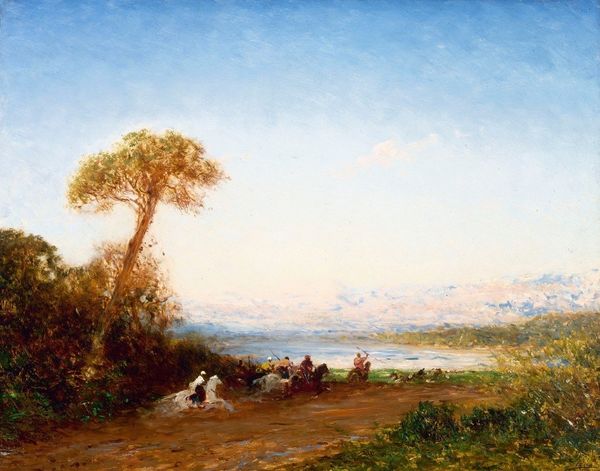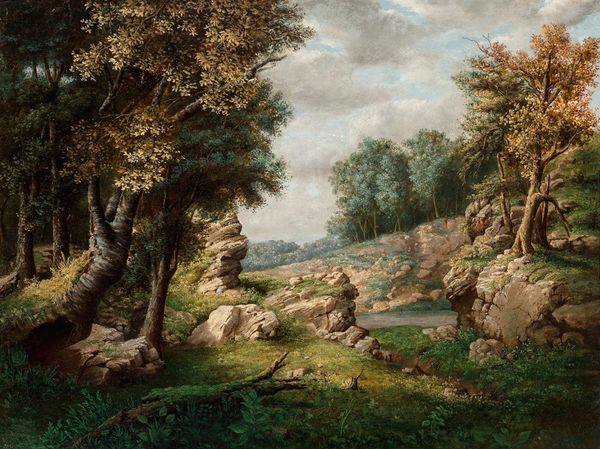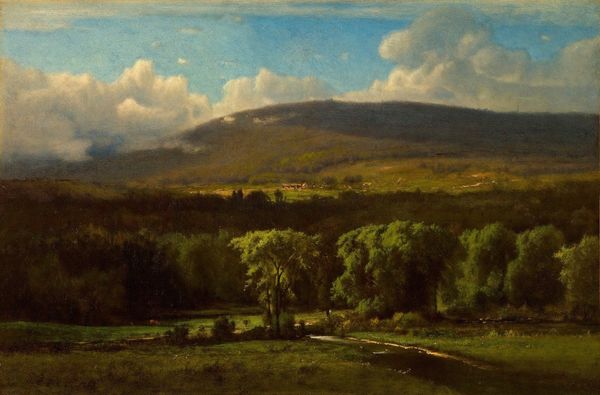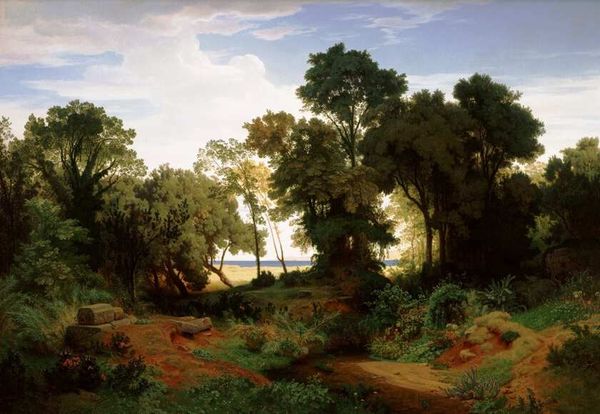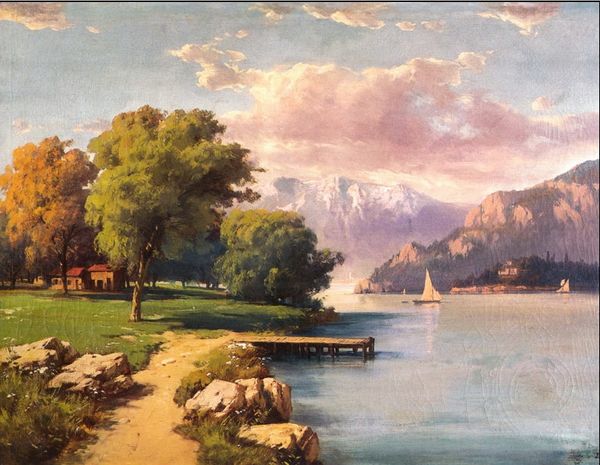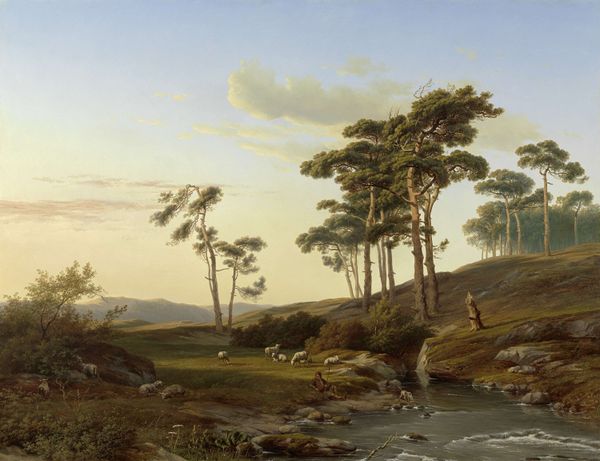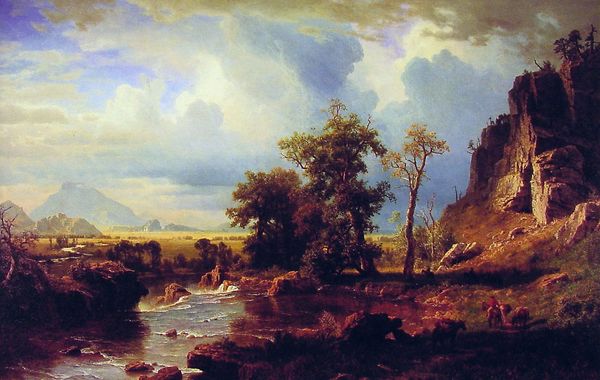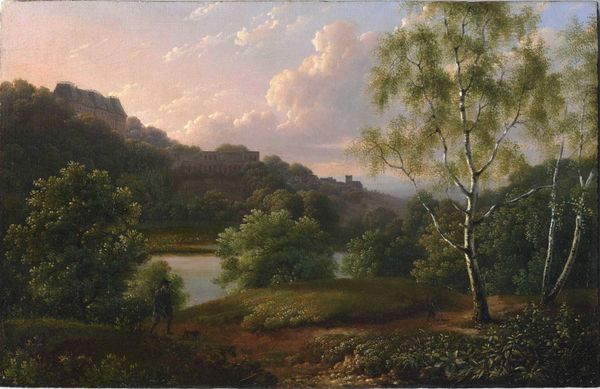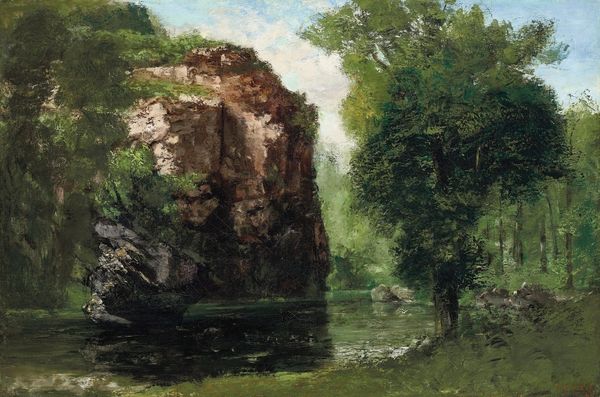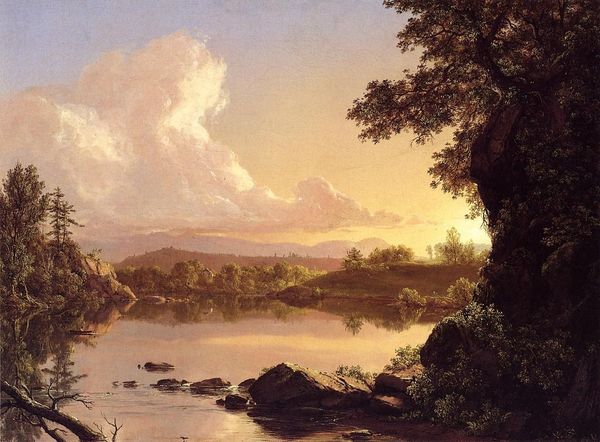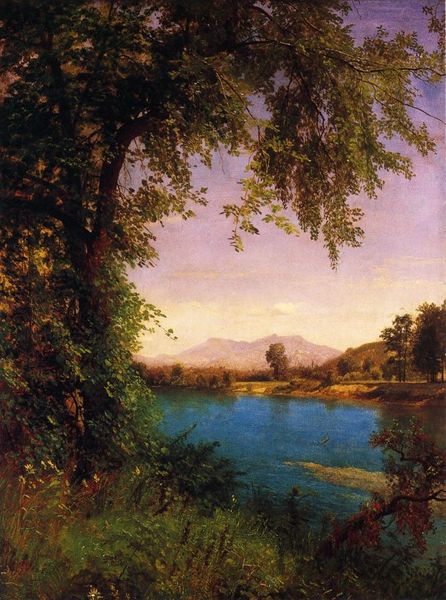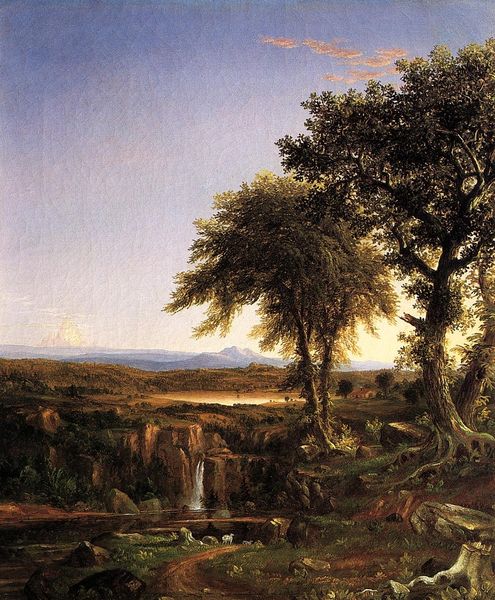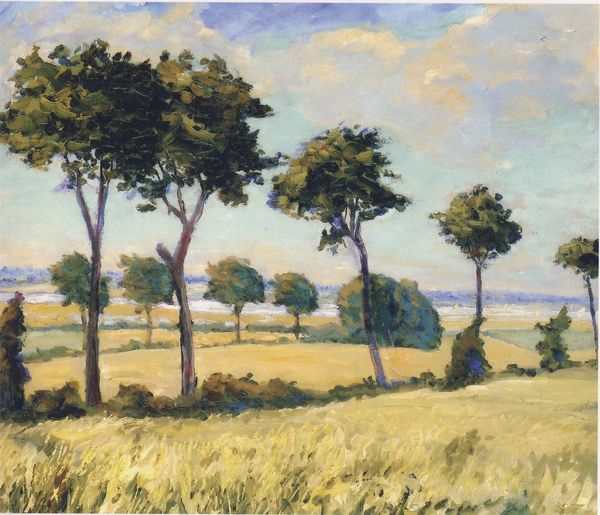
Copyright: Public domain
Curator: Let's take a moment with "Evening at the Sea" by Konstantin Bogaevsky, created in 1941 using oil paints in the plein-air tradition. Editor: Well, my first thought is this painting feels like a half-remembered dream, or maybe the backdrop to a story my grandmother used to tell. Sort of wistful, wouldn't you say? Curator: I agree that the scene holds a strong emotive quality. Looking at the historical context, though, it’s impossible to ignore that 1941 was a particularly fraught year in Soviet history, with the German invasion underway. Bogaevsky was living in Crimea at the time. Editor: So you're saying, there's more than just pretty light and fluffy clouds at play here. He could've been painting under, y'know, very heavy circumstances. Suddenly that wistfulness feels heavier. Curator: Exactly. Consider the interplay of naturalism and romanticism in his style. He captures a very real landscape, yet there’s a clear idealization. It could be viewed as a form of resistance—finding beauty amidst turmoil or preserving a memory of peace when war was escalating. Editor: It’s like he's holding onto something precious. The way those trees are painted – solid, almost protective – feels so deliberate. Like he's painting a hope, or maybe a reminder that beauty endures, even when everything else is crumbling. Did he paint a lot of seascapes? Curator: Seascapes feature prominently in his work, especially views of Crimea. We might interpret the constancy of the sea, which appears quite agitated in this painting, as representing the enduring spirit of the Crimean people, constantly challenged yet never defeated. Editor: Makes you wonder what 'evening' meant to him then. Was it a time of fear, of relief, or something in between? Anyway, I am sure it is amazing how history changes everything that one could perceive by seeing the artwork. Curator: It enriches it. The artwork becomes not just an image, but a vital document, reflecting a complex socio-political reality. It provides a narrative about resilience during a time of immense struggle. Editor: Right. Next time I look at clouds, I’ll remember that sometimes they’re more than just pretty white things. Thanks for cracking that open.
Comments
No comments
Be the first to comment and join the conversation on the ultimate creative platform.
